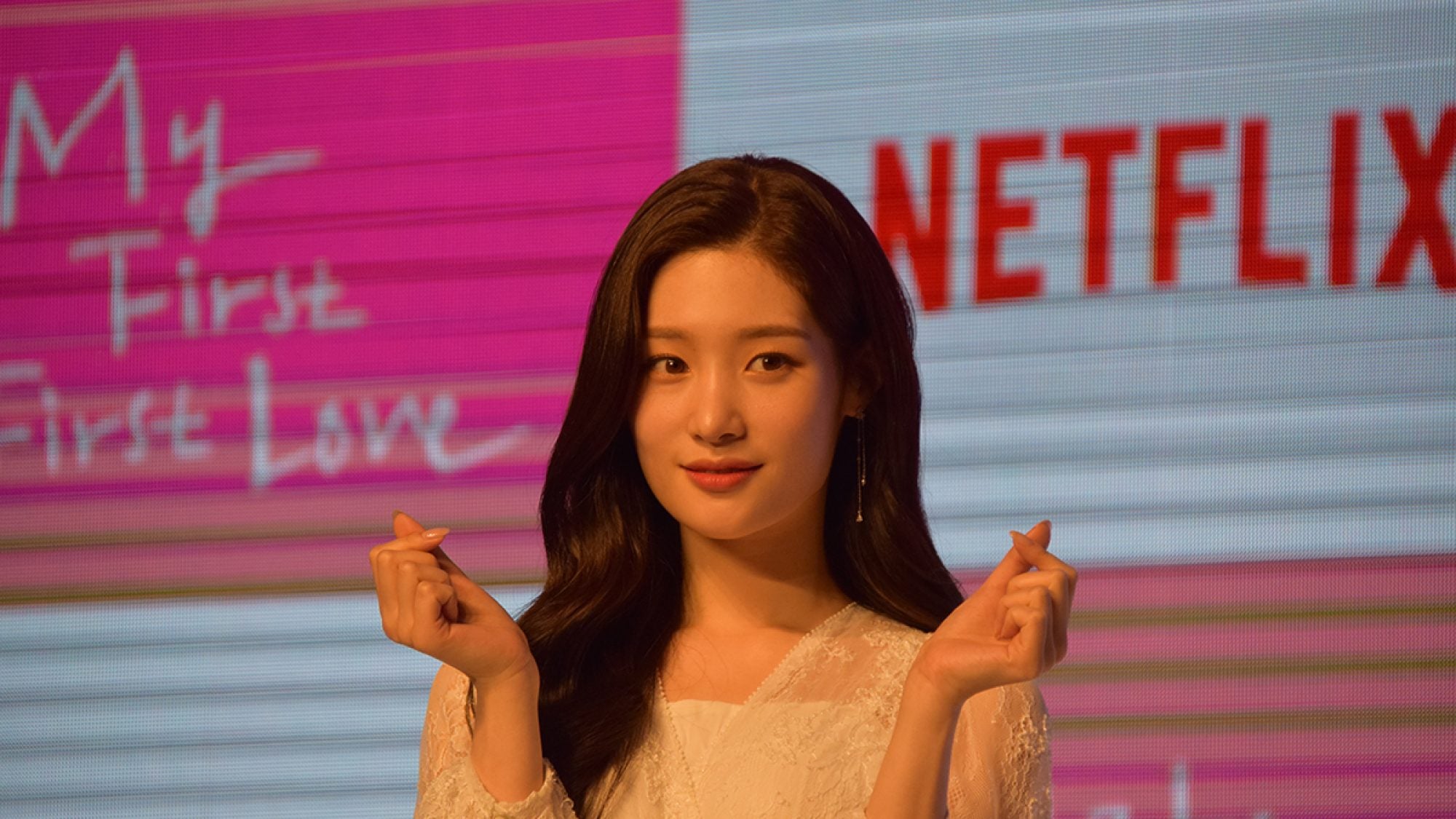
Title: Sympathy for the K-Drama
The “affective interlude” in Korean serial television (K-Dramas) emblemizes the appeal of the K-drama through its focus on the emotions of characters and its solicitation of viewer sympathy, all of which are characteristics key to understanding the soft power of the K-drama and the role of Korean popular culture in international diplomacy.
The K-Drama
Over the past several years audiences around the globe have become fans of K-dramas such as Crash Landing on You, Extraordinary Attorney Woo, The Glory, and dozens of others. In a testament to their growing popularity, Squid Game became Netflix’s most-watched television series in 2021 with over 1.65 billion viewing hours in its first twenty-eight days of release. These incredibly popular serial shows provide a wholesome alternative to the cynical stories often featured in American television. For some, consuming K-dramas may even improve mental health through their utopian visions of community that seem more compassionate and just than our own. Their seemingly simple and often moralistic plotlines develop through unexpected and sometimes sensational twists and turns, compelling viewers to binge-watch multiple episodes in one sitting. In the past, viewers were predominately women, but in the age of “quality” television, this trend is changing rapidly. The types of stories featured in K-dramas have become increasingly diverse, extending beyond the romantic melodramas typically consumed by female spectators.
Popular culture greatly influences the global image and reputation of South Korea. The meteoric rise in popularity of K-dramas, K-pop music, cinema, fashion, Korean cuisine, cosmetics, and YouTube streamers has contributed to the growing strength of Korean soft power over the past thirty years. Around the globe, audiences have become familiar with Korean history and its contemporary social, economic, and political challenges through their depiction of digital culture. Although the success of Korean pop culture may appear sudden, it results from a set of carefully crafted public policies, starting in 1993, that aimed to globalize the South Korean economy and transform its culture into an exportable commodity. The South Korean government has supported K-culture through subsidies and tax incentives to ensure high production value, investment in facilities like the Digital Media City in Mapo-gu, initiatives to widen global distribution networks, and tourism campaigns to promote locations where movies and dramas were filmed. With soft power raising awareness of Koreanness through international diplomacy, contemporary K-dramas and the resulting sympathy from viewers towards Korea play a critical role in understanding how Korea has achieved its significance in the world today.
Affective Interludes
K-dramas typically include “affective interludes,” a key reason for the K-drama’s immense popularity. Affective interludes are moments that make a bold spectacle of the heartfelt feelings of an individual or a group of characters. These private feelings may be nostalgic, romantic, despairing, grateful, or blissful and are given public expression through the aesthetics of television. A typical interlude begins with a slow tracking shot of a character deep in thought at a café or beneath a streetlamp in Seoul, cut with a view of their forlorn face, and crosscut with an image of their colleague or love interest. Another shot then triggers a flashback to a significant moment in the series.

These sequences momentarily suspend the forward movement of the plot and thus often contain little dialogue. They function largely to elicit feelings of sympathy and affection from viewers, perhaps even inspiring them to cry (or cringe). In K-dramas such as Stranger and Queen of Tears viewers are invited to “feel the pain” of the characters and sense that they are deserving of love. Accompanying music is crucial for the affective interlude. Spare piano tones, string ostinatos, and songs with sentimental lyrics coordinate the emotions of the characters with those of the spectator.
While the affective interlude is not unique to Korean cultural production, it exemplifies how image and narrative are marshaled in the service of the sincere emotional expression that is central to the K-drama’s appeal. Affective interludes induce a perceived sense of intimacy with Korean culture, as viewers sympathize with and become more aware of Korea’s social causes through the plots and settings of the K-drama.
The Soft Power Dynamics of the K-Drama
While we may question their accuracy in depicting the reality of Korea, K-dramas are a major sympathetic draw for viewers around the globe. Their popularity has contributed to tourism in the country by millions of fans with many inspired to visit the locations featured in their favorite dramas and, for some women, to find romance. US college students, according to a recent study, cite their enthusiasm for K-pop and dramas as key motivating factors for learning the Korean language. K-drama viewers from South and Southeast Asia, Latin America, and the Middle East gravitate towards Korean television for their sincerity and stories that aspire toward social harmony and respect for family values. Viewers in the Arab world reportedly perceive Korean Confucian morals to be culturally proximate to those in traditional Islam. They recognize their own “resonating feelings” while watching Korean television, feelings that are integral to their everyday life.
The power of the K-drama to produce sympathy abroad has inspired efforts to establish official cultural exchange programs, such as The Korean Foundation of International Cultural Exchange in Myanmar and Bangladesh. Korean cultural centers in India and Pakistan, under the auspices of the embassies in these respective countries, have deployed the appeal of K-dramas to foster greater understanding and exchange. The K-drama and the affective interludes that underpin them have played a key role in expanding cultural understanding and influence between Korea and these nations.
When President Yoon Suk-yeol visited the United States in April of 2023, he met with state officials to reaffirm the long-standing US-ROK alliance. Notably, he also met with representatives from Paramount, NBCUniversal, Sony Pictures, and Disney to forge closer cultural ties between the media industries of the two nations. A meeting with Netflix co-CEO Ted Sarandos confirmed that the streaming giant will invest $2.5 billion in Korean dramas and movies over the next four years. A recent meeting between the chairman of Hybe, Korea’s top talent agency, and United Arab Emirates President Mohamed bin Zayed Al Nahyan reiterated the close relationship between culture and politics in Korea. Korean popular culture can continue to mobilize public sentiment and emotionally inform Korea’s political intentions on the global stage. South Korean officials and executives should continue to export Korean content in the age of streaming and global media platforms to promote Korean causes as sympathetic, particularly as South Korea begins to influence some of the world’s most challenging issues.
Korean Television in a Regional Asian Context
The Korean government’s push to export culture, which started in the early 1990s, has paid off. K-dramas are no longer merely sappy television. Rather, they render Korean culture familiar and thus influential to audiences around the world. And K-dramas are not merely exportable commodities, as they can garner sympathy and win foreign political allies for South Korea. Building coalitions with others is important for a nation that is technically still at war with its northern neighbor and for a national economy that sees itself as a “shrimp between two whales,” namely between China and Japan.
Though K-dramas can strengthen South Korean ties with the rest of the world, they can also be the center of regional tensions. In 2016, the Chinese government banned K-dramas and K-pop music in response to the Korean government’s decision to host the Terminal High Altitude Area Defense (THAAD) missile system on Korean soil. Sponsorships and promotional tours involving Korean actors popular in China were canceled in the intervening months. Despite this ban on K-dramas entering the country, DVDs have been smuggled across the Chinese border to meet the rising demand for South Korean media. Though China relaxed the boycott of some Korean products in 2017, the political damage was already done and anti-Chinese sentiment in Korea remains high. Meanwhile, North Korean leaders have actively characterized South Korean popular culture as a threat to their government and way of life. While adversarial states have sought to leverage K-dramas against South Korea, dramas have undeniably served as a powerful bargaining chip in Korea’s diplomatic relations.
K-dramas have succeeded in appealing to the sympathies of global viewers compared to the dramas of Korea’s neighbors. Japanese and Chinese serial television (“J-“ and “C-dramas”) have not enjoyed the same degree of state promotion outside of their local markets and, in the case of the latter, have been subject to strict regulation and censorship. The lack of state support explains why J- and C-dramas feature themes and aesthetics that seem to cater to their own national audiences. J- and C-dramas are also not as widely distributed on Netflix and other global platforms. In contrast, K-dramas have found their niche in Japan, particularly since 2003. In some cases, they outperform locally produced television serials.
However, K-dramas could grow even further through creative and industrial alliances with the drama industry in Japan. President Yoon’s visit to Tokyo, Japan in March of 2023, the first summit meeting in twelve years, has opened doors to forge greater ties and economic partnerships between the two nations. While many K-dramas are set in places such as Spain, Greece, and Canada, as well as colonial Japan, they seldom depict contemporary Japan. If K-dramas did so, they could help audiences of both countries perceive the other as more sympathetic moving forward. While relations between the two nations remain fragile but are moving toward cooperation, Koreans could work with J-drama producers to showcase strengthened bilateral ties through shared distribution networks and more high-profile co-productions.
Overall, Korean officials should continue to situate popular culture in the realm of international politics to increase the visibility of Koreanness and produce sympathy towards South Korean culture among international viewers. This could ultimately help South Korea as a small but increasingly influential nation.
. . .
Steve Choe is an Associate Professor in the School of Cinema at San Francisco State University. He is the author of “Sovereign Violence: Ethics and South Korean Cinema in the New Millennium.”
Image Credit: Wikimedia Commons